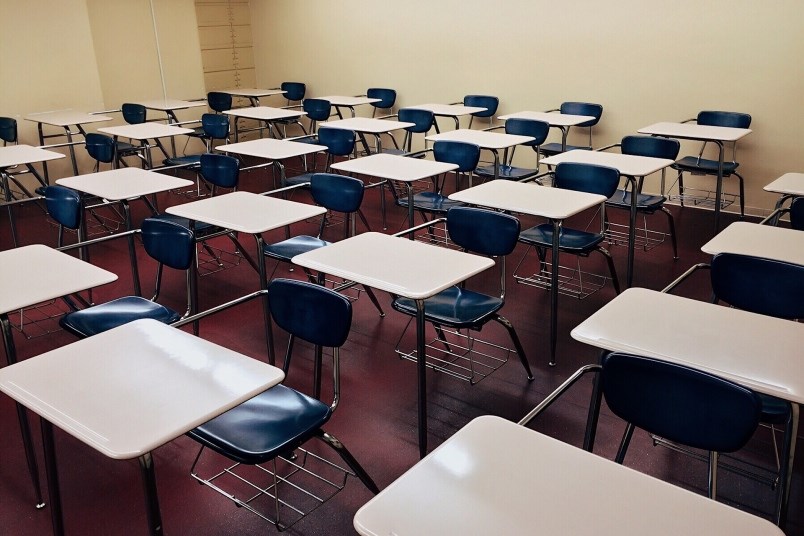With time running out for school planning, Coquitlam Teachers’ Association president Ken Christensen still doesn’t know how 30,000 School District 43 students will be organized into groups for safe learning in September.
It’s a nagging question that has the veteran teacher and union member speculating and contacting SD43 board offices for answers.
So far, he’s heard little that gives him relief.
Like parents, teachers, students, school trustees and administrators, Christensen is trying to figure out what school will look like Sept. 8, and so far, the future is uncertain and fraught with worry for the more than 2,300 SD43 teachers that form the third largest BC Teachers’ Federation bargaining group in the province.
From keeping at-risk families and teachers safe from the COVID-19 virus to making sure students keep up with their education, there are more questions than answers, he says.
One thing for certain, Christensen would like the provincial government to do more consultation and planning and delay school start-up until schools are ready.
PROBLEMS PREDICTED
“What I would like to see, honestly, I would like to see more listening to the teachers who are in the working groups and the steering groups about what works and what doesn’t. I know there’s been open discussion and I’m appreciative of that. I just want the consultation to result in meaningful change to the plan, not talk.”
Among his biggest concerns is how grouping students into groups of up to 60 people for elementary and 120 for secondary schools will work, given that many of the special learning services for students are provided by teachers and education assistants who move from school to school or class to class. And when a substitute teacher is needed to fill in for a sick employee, the bubble is burst, and the cohort suddenly expands.
“It fundamentally won’t work,” he predicts.
There’s also a question of how to deal with teachers and students whose health is compromised or who have a vulnerable family member at home they must protect.
“Under WorkSafeBC, they need to accommodate [and] we don’t know what they’re accommodating to — we don’t have a plan. We have kids who have health considerations, teachers who have health considerations, and administrators, as well.”
According to SD43, it’s up to teachers to let administrators know if they can not return to work. And as the Ministry of Education plan is to return to school for in-person learning by September, working from home will likely not be possible, said district spokesperson Ken Hoff.
STAFFING ADEQUATE
Hoff said administrators are working on the details of the Phase 2 school plan and has few details to reveal. However, early indications are that there will be enough teachers to deploy even with the changes wrought by COVID-19 and the organizing of students and staff into cohorts, although Hoff said the number will be “reassessed once we have determined our reworked class structure.”
Meanwhile the provincial health officer is confident the plan will work and the premier says children won't be put at risk.
It will likely be Aug. 26 before more is known about how SD43 will respond to the new back to school circumstances, Hoff said — although districts are expected to submit their plans to the province by Aug. 21.
For Christensen, more information would be helpful to prepare teachers for the new school year.
When schools re-opened to students part time in June, regular cleaning and sanitization were a priority and administrators didn’t stop people from wearing masks.
However, Christensen would like to see the province go further and make masks mandatory for adults and older students, something many parents have been calling for during the school-start up planning process.
MANDATORY MASKS
Toronto School Board is mandating masks for students over the age of 10, and Christensen agrees with the idea to make masks mandatory for some SD43 district students if it would make people more confident when school re-opens.
“If it’s something that makes everybody more comfortable and does reduce infection, even in a small way, why not just do it,” Christensen said.
From a practical standpoint, the idea of grouping students looks good on paper, and may be able to work at the elementary level, where schools are smaller. But Christensen is doubtful that grouping high school students will be as successful, especially in some of the larger schools, such as Terry Fox, Centennial and Port Moody secondary.
He wonders how student electives will be affected, for example, and how people can move around in schools without bumping into each other.
“It’s going to tap out the time and resources of the building to keep these cohorts apart,” Christensen said.
He believes the cohort size announced by the province is based on an estimate of risk, and to make it easier for health workers to contact trace.
But he fears education was not a priority in selecting the number for group cohorts.
“That announcement smacks of risk management not pedagogy,” Christensen said.
He would like more thought put into how these cohorts would work and more time to put them into practice.
If it takes an additional week of implementation, and students start a week later than originally planned, he thinks the extra time would be put to good use.
“Our interests are pedagogical, we are interested in how to provide an effective education — which is our job.”



